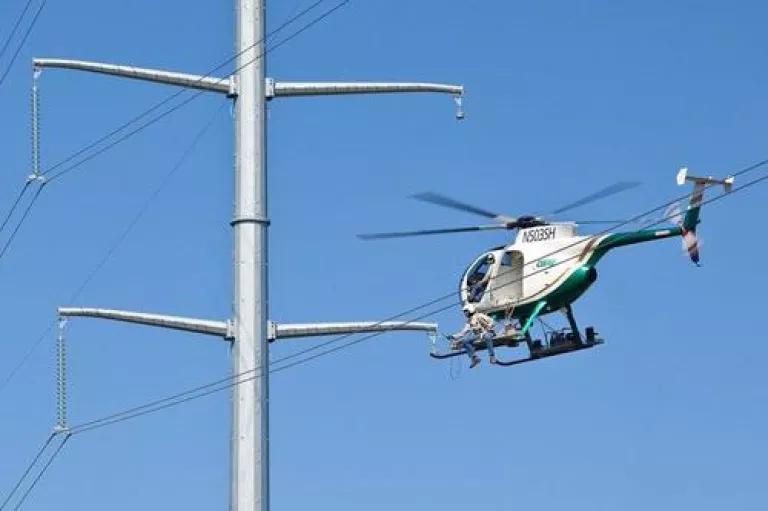
In a timely new report, three prominent electric grid industry experts refute claims that the president's proposal to cut carbon pollution from power plants will jeopardize electric grid reliability. The authors, Susan Tierney, Eric Svenson, and Brian Parsons, explain that those claims undervalue the grid's strengths and the Clean Power Plan's flexible design. They also chart a role for grid planners to help states develop their plans to cut carbon pollution.
Their conclusion is noteworthy:
"We are confident that we can achieve a lower-emissions electricity grid while maintaining reliability. Our electric system is designed to maintain reliable, dependable service through both typical, steady-state conditions and uncommon, unanticipated events. This design - the combination of infrastructure elements, policies, and operations - is what enables the system to adapt to the market transitions already under way, and will also allow the system to adapt to the long term goals as envisioned under the proposed Clean Power Plan."
Tierney, Parson, and Svenson, who have more than 100 years combined experience in the power sector, prepared their report in the aftermath of the Federal Energy Regulatory Commission's (FERC) recent public meetings on the Clean Power Plan. It is a must read for anyone interested in a thoughtful perspective on the reliability issues raised at those meetings.
Grid planners have many tools to maintain reliability
In their report, Tierney, Parsons, and Svenson find that the Clean Power Plan gives states ample flexibility to cut carbon pollution. For example, the Plan gives states more than a decade to achieve relatively modest cuts in carbon pollution, and states can use market-based solutions to avoid reliability issues. That flexibility, combined with existing power grid management tools and practices, mean that grid planners can handle reliability issues related to plan implementation in stride, just as they have done for decades. These tools and practices include:
- Electric transmission policies that have reinforced the nation's grid infrastructure;
- Favorable market conditions for developing natural gas infrastructure, and a robust and diverse existing network of pipelines;
- Ample experience with integrating higher levels of carbon-free renewable energy, which also can provide reliability services;
- Ability to maintain specific power plants needed for reliability, even if they run less frequently than their historic levels, though capacity payments, reliability must run contracts, and other measures; and
- Programs across the country focused on building resiliency of the grid though peak events, often responding rapidly to changing conditions.
All of this means that the evolving grid, including anticipated changes likely to occur by 2020, will be well-positioned to meet near-term Clean Power Plan emission reduction targets.

Construction of CapX2020 project in Upper Midwest. Courtesy of CapX2020.
What about FERC?
The report also recommends several steps FERC can take to ensure continuing reliability. One of the most important is ensuring that grid planners subject to FERC oversight use consistent, best practices in technical grid modeling standards. This recommendation makes sense because in many cases grid operators and planners will be evaluating state and regional compliance plans. Their assessments will only be as good as the models themselves, including the many assumptions fed into the models. Overly simplistic or implausibly limiting assumptions and inaccurate models can, as we already have seen, lead to erroneous conclusions, which in turn will confuse states as they develop compliance choices. On the other hand, models which use reasonable assumptions and forecasts can help point states toward smarter compliance decisions.
The report also recommends that independent system operators and other regional grid authorities provide input on draft state implementation plans before the plans go to EPA for approval. This recommendation also makes sense because grid managers already regularly assess state and federal energy and environmental laws for their potential impacts on grid reliability. Grid authorities also will be well-positioned to periodically review the effects of ongoing state compliance on grid reliability. States benefit because they can use the input to inform development and implementation of reliable, affordable state compliance plans.
Don't bust the carbon cap
The report emphasizes that because of the Clean Power Plan's flexible design and the many tools available to grid planners to manage reliability issues, there is no good reason for a "reliability safety valve," especially one that would allow power companies to emit excess pollution. According to the report, "we are concerned that a reliability safety valve could reduce the incentives for states to conduct the proactive planning that would otherwise result in successful implementation of the [Clean Power Plan]."
However, the report does say that if FERC recommends a reliability mechanism of any kind, it should include a requirement to offset any excess carbon emissions associated with implementation of the reliability mechanism. Requiring a carbon offset will preserve the integrity of the Clean Power Plan while maintaining reliability.
Keep calm, plan ahead
Tierney, Parsons, and Svenson's thoughtful response to the reliability claims raised in the recent FERC technical conferences provides balance to the reliability discussion surrounding the Clean Power Plan. It reminds us that grid planners already have the systems in place to maintain reliability. They are maintaining and continuously strengthening grid reliability even as our nation significantly expands zero-carbon wind and solar energy and energy efficiency. There always will be problems for grid planners to solve; that's their job, and they do it well.

